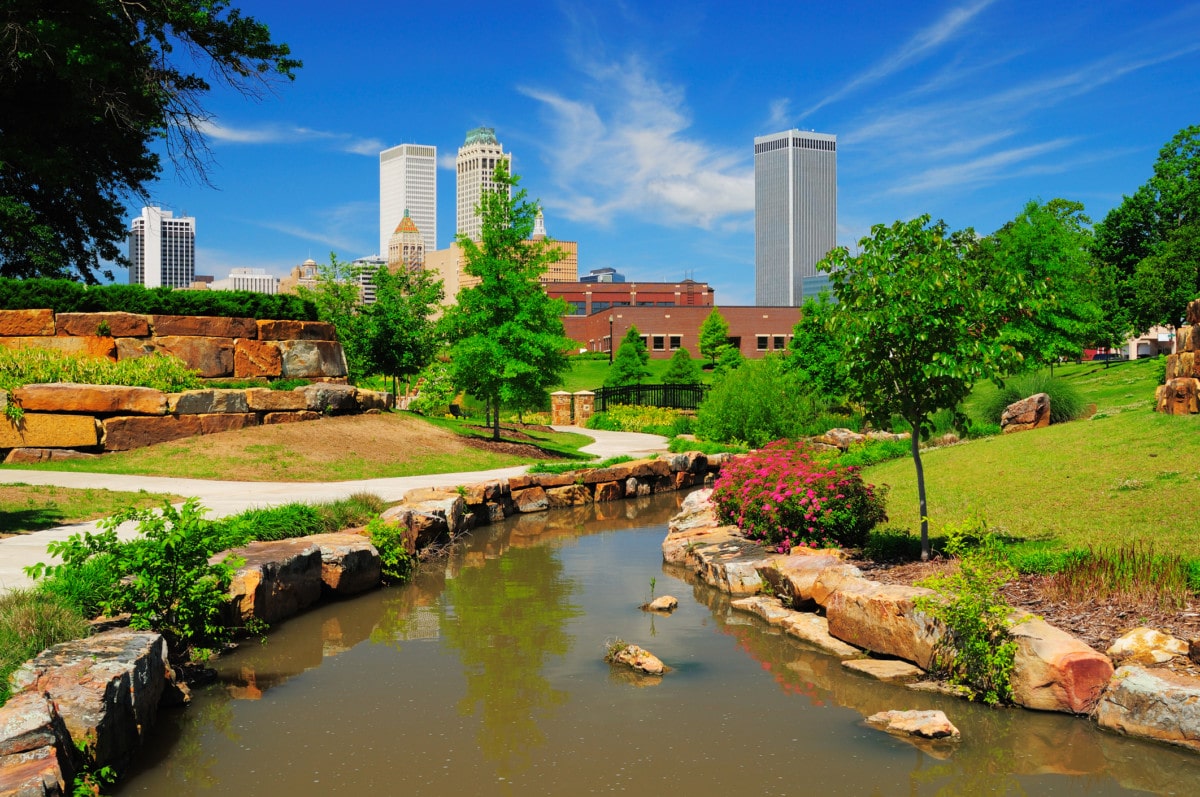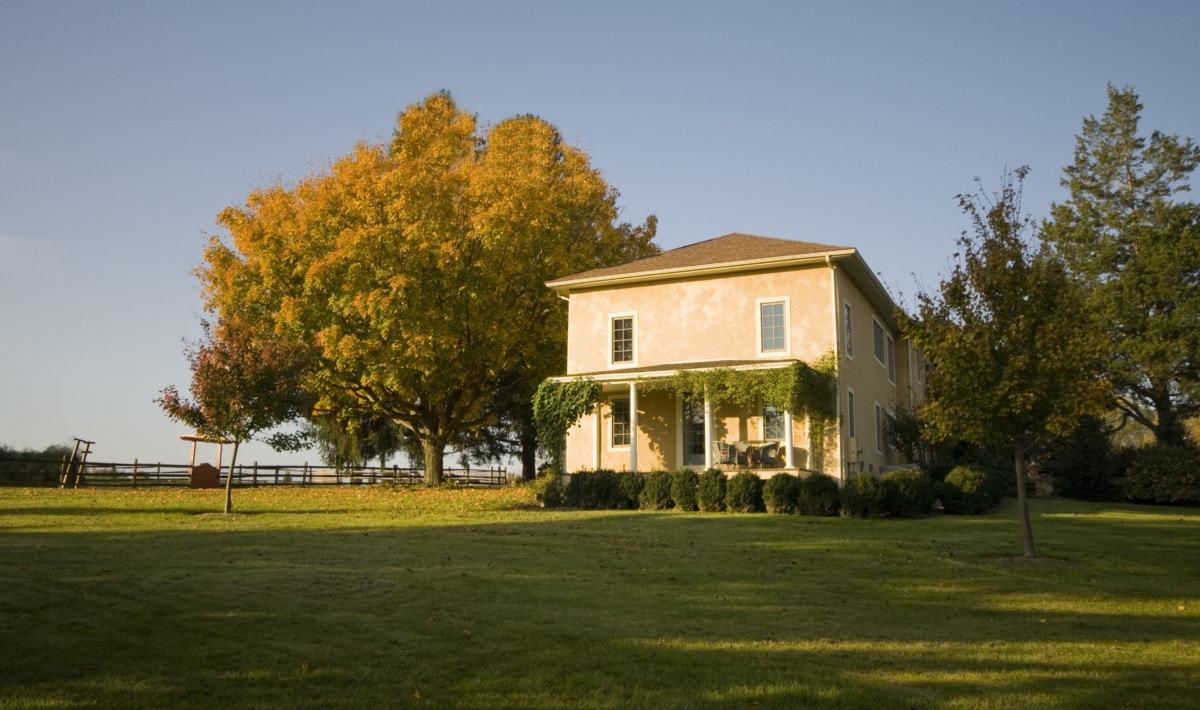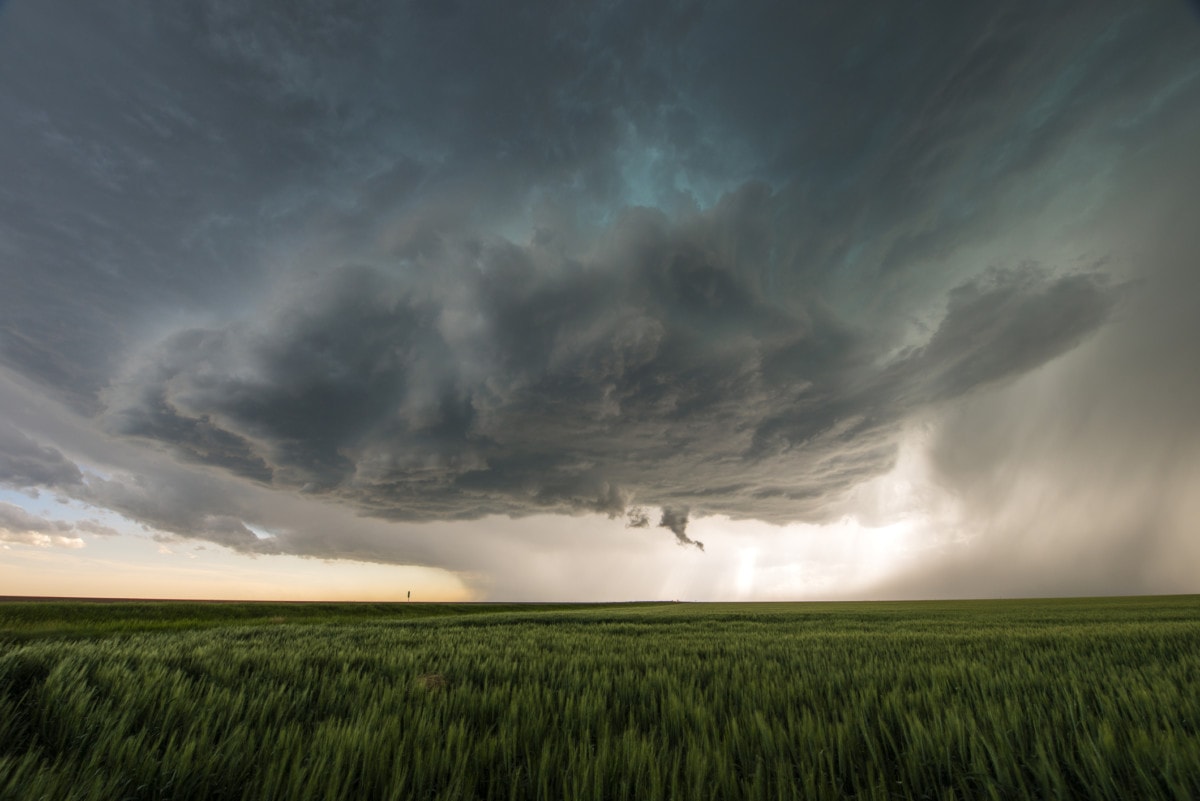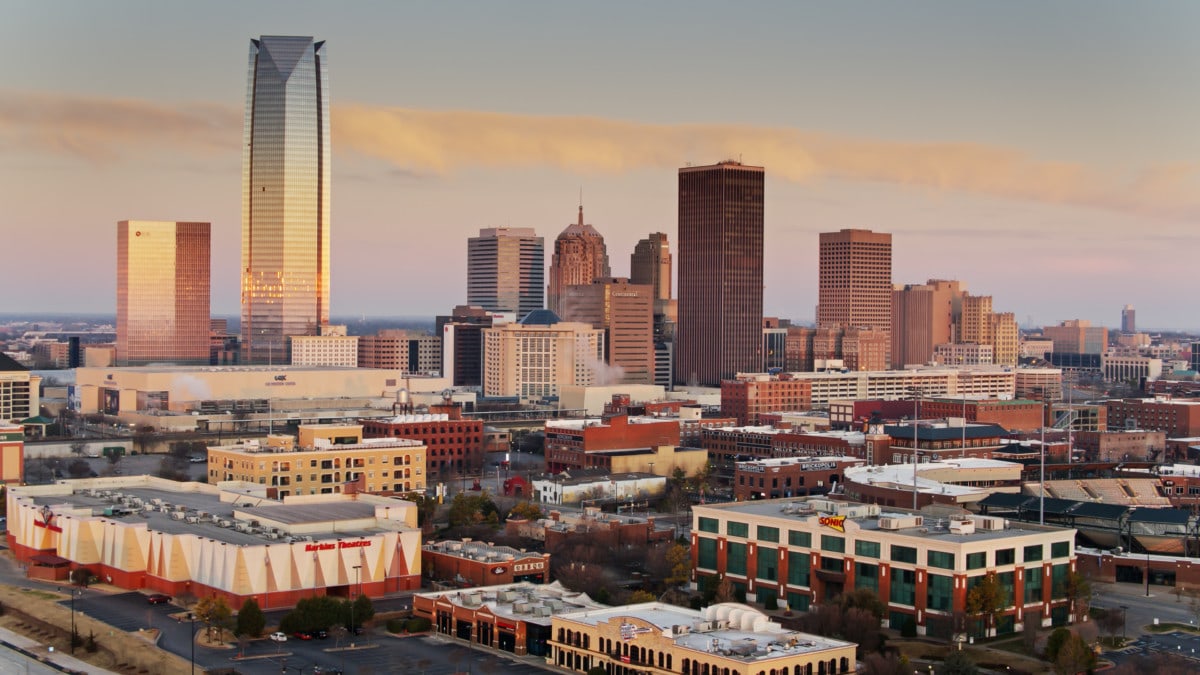10 Pros and Cons of Living in Oklahoma
Oklahoma, also known as the Sooner State, offers a unique blend of small-town charm and a diverse experience for its residents. It is known for its rich Native American history and culture, with 38 tribal nations and various historic sites and museums. Oklahoma boasts a wealth of natural beauty and scenic landscapes, and while there are many reasons to live there, it does have its drawbacks. So whether you’re searching for homes for sale in Oklahoma City, an apartment in Tulsa, or wondering if Oklahoma is a good place to live, read on for ten pros and cons of living in Oklahoma before calling this state home.

Pros of living in Oklahoma
1. BBQ lovers will thrive here
Oklahoma is famous for its BBQ culture, with many BBQ joints and competitions throughout the state. The “Oklahoma-style” BBQ, which combines Texan and Kansas City-style BBQ is particularly renowned. It typically features smoked meats such as beef brisket, pork, and sausage served with a tomato-based sauce. Oklahoma is also home to many BBQ festivals and events, including the annual Oklahoma Pork and Barbecue Festival, which attracts thousands of visitors yearly.
2. Oklahoma is known to be an affordable state
The state has a median home sale price of $227,000, which is lower than the national average of $388,472. The overall cost of living, including transportation, healthcare, and other essential expenses, is also generally lower than in other parts of the country. If you’re searching for homes for sale, check out cities like Oklahoma City, which has a median sale price of $242,000, or Norman, where the median sale price is $249,000. Along with buying, renting is affordable throughout the state. In larger cities like Tulsa, a two-bedroom apartment averages around $1,053.

3. The Sooner State has rich history
Shaped by the many groups of people who have called the state home over the centuries, Oklahoma’s cultural history is diverse and complex. The Sooner State became the new home to various indigenous tribes in the 19th century, and was also a sought-after destination for settlers during the late 1800s and early 1900s. You can also find a thriving African American culture in the northeastern region with rich music, cuisine, and cultural history. To learn more about the state’s past, consider the Oklahoma City National Memorial and Museum or the National Cowboy and Western Heritage Museum.
4. Oklahoma has a vibrant arts scene
Oklahoma has a thriving arts scene that encompasses a variety of forms and styles, from traditional Native American and Western art to contemporary works by local artists. The state is home to numerous museums, galleries, and cultural centers, as well as performance spaces for theater, dance, and music. Some of the most notable arts institutions in Oklahoma include the Oklahoma City Museum of Art and the Philbrook Museum of Art in Tulsa. Rich traditions of Native American art and culture are deeply rooted and widely prominent. The state has a large Native American population, and the arts scene reflects this diverse cultural heritage through traditional pottery, weaving, beadwork, and other forms of Native American art.

5. There is a wide range of recreational activities
Oklahoma offers its residents excellent recreational opportunities for any adventurer. The Sooner State is home to several state parks, such as Beavers Bend State Park and Natural Falls State Park, which offer hiking, camping, fishing, and boating opportunities. Lake Texoma and Grand Lake are popular destinations for boating and fishing. There are also many golf courses and opportunities for hunting, horseback riding, and rock climbing. No matter where you are in the state, you’ll find an activity you enjoy.
Cons of living in Oklahoma
1. Some areas have weak infrastructure
The infrastructure in Oklahoma can be described as having some challenges, particularly in budgeting and funding for its infrastructure. As a result, many infrastructure projects, such as repairs to bridges and roadways, may not be completed in a timely manner. This can lead to issues such as potholes and uneven surfaces on the roads, which can potentially cause damage to vehicles.
2. Prone to natural disasters
Oklahoma is known for its severe weather, particularly tornadoes. The state is located in an area known as Tornado Alley, which includes parts of Texas, Kansas, and Nebraska. This region experiences many tornadoes due to the combination of warm, moist air from the Gulf of Mexico and cool, dry air from the Rocky Mountains. Residents also experience severe thunderstorms, hail, and flash flooding. It is essential for residents to be prepared for severe weather and to create an emergency evacuation plan.

3. You’ll want a car to get around
Living in the Sooner State can present challenges for those relying on public transportation. There are limited public transportation options, with most cities and towns relying primarily on bus systems that may have limited schedules and routes. Additionally, many rural areas in Oklahoma have no public transportation options, making it difficult for residents to access essential services and resources. This lack of public transportation can create barriers for those without access to a car. However, in recent years, Oklahoma has made efforts to improve public transportation options, including expanding bus routes, partnering with ride-sharing companies, and implementing bike-share programs in some areas.
4. Big city life is lacking
Oklahoma has a sparse population density in comparison to other states in the U.S., leading to the absence of major metropolitan areas. The state’s largest city, Oklahoma City, has a population of about 700,000, which is relatively small compared to other major cities in the country like Los Angeles or New York City. This can lead to fewer job opportunities, fewer places of cultural interest, and a lack of nightlife in some areas of the state. Living in Oklahoma can be a challenge for those seeking an urban lifestyle and more access to amenities and resources due to the lack of large cities.

5. The summers can get hot and muggy
Oklahoma summers are typically warm to hot, ranging from the high 80s to low 90s degrees Fahrenheit. The state experiences high humidity, making the air feel oppressive and increasing the heat index. It is also prone to drought, affecting crops and water resources. You’ll want to prepare your home for drought to protect your property in the summer months.
The pros and cons of living in Oklahoma: Bottom line
It’s important to consider all the pros and cons of living in Oklahoma before making a move. While the state offers a unique mix of natural beauty, outdoor activities, and southern charm, it also has its set of challenges. Be sure to weigh all the factors before making a decision.
The post 10 Pros and Cons of Living in Oklahoma appeared first on Redfin | Real Estate Tips for Home Buying, Selling & More.
